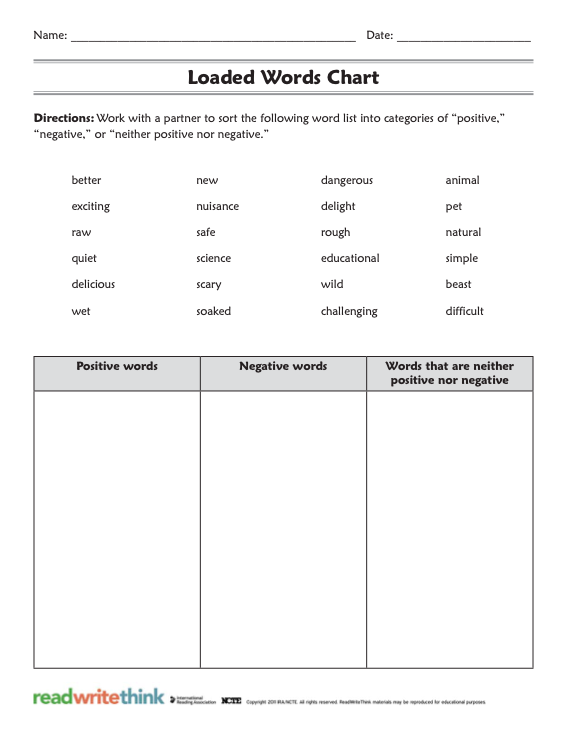Why do some words pack more emotional punch than others?
Some words, like fun or free, evoke positive reactions. Other words, like dangerous or pollution, generate a negative response. Smart writers know how to use words that cause readers to respond in a particular way, especially with persuasive or argumentative text. And smart readers know how to recognize when writers have used those words.
TEACHING "LOADED WORDS"
With the students, examine a piece of advertising or a brochure from a tourist attraction and look for words that the writers have used to make readers want to visit that place or buy that product. For example, the website from the Canadian Museum of History contains words like spectacular, unrivalled, impressive, celebrated, and fascinating.
Remind students that the words and arguments that writers use may be quite different, depending on the audience. For example, a brochure meant to persuade someone to visit an amusement park might use words like exciting, wild rides, fastest, highest. Ask students if these words would be more likely to appeal to an adventurous teenager or to a cautious parent. Have students suggest words that might make a more positive emotional impact on an older person. You might suggest the words beautiful, safe, fun, and family-friendly.
Provide students with the Loaded Words Chart from Readwritethink.org or display the material on an overhead. Have students work in pairs to sort the words into categories of “positive,” “negative,” and “neither positive nor negative.
Have your students read some persuasive texts to look for Loaded Words. Summer: 15 Days or 2 1/2 Months? and Adopting a Pet from the Pound are two student-written articles.
A complete lesson by Lori Jamison may be found at readwritethink.org/files/resources/lesson-docs/30788.
Read more about TEACHING PERSUASIVE TEXT.


